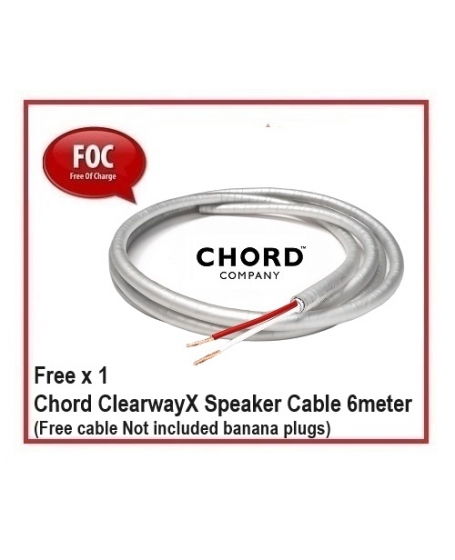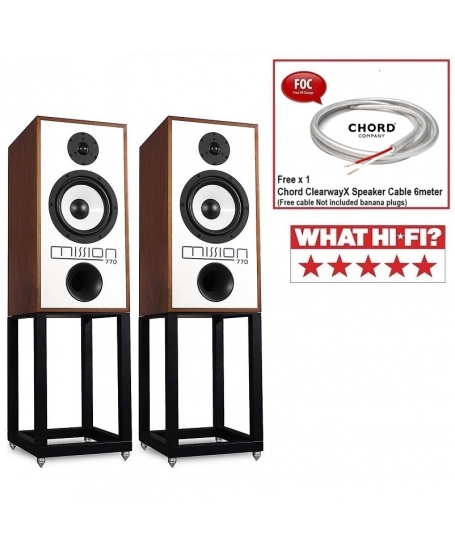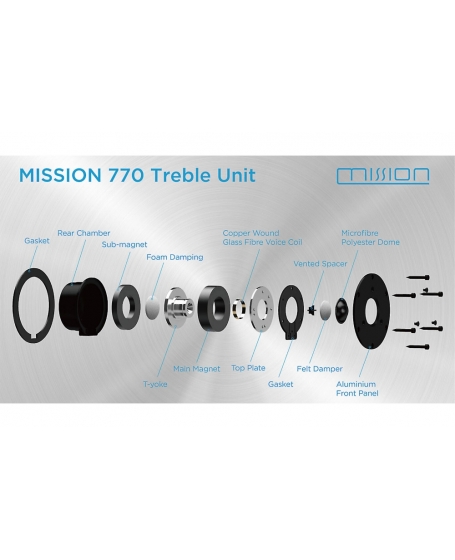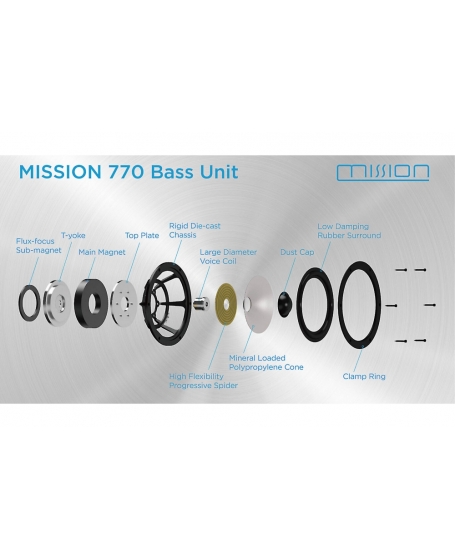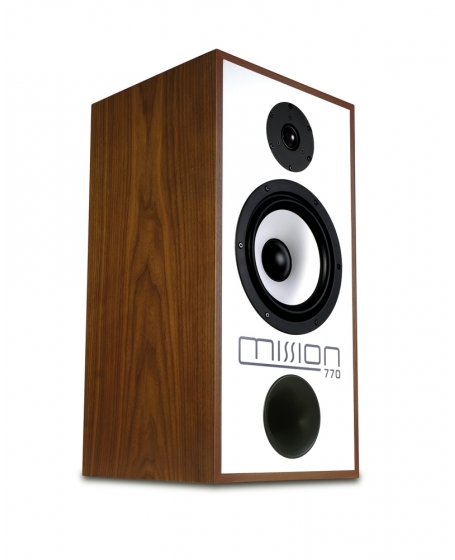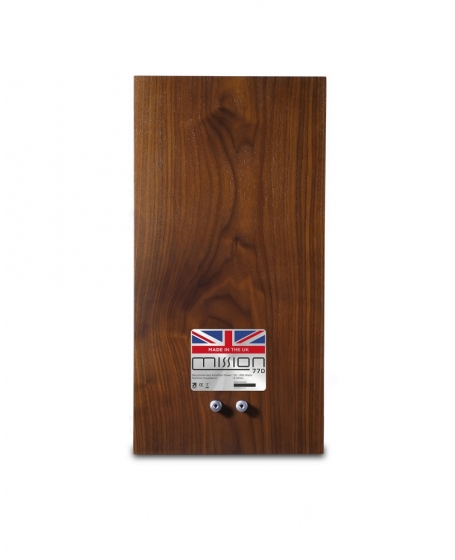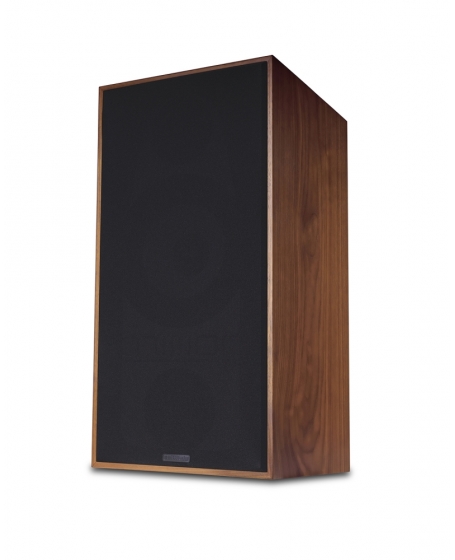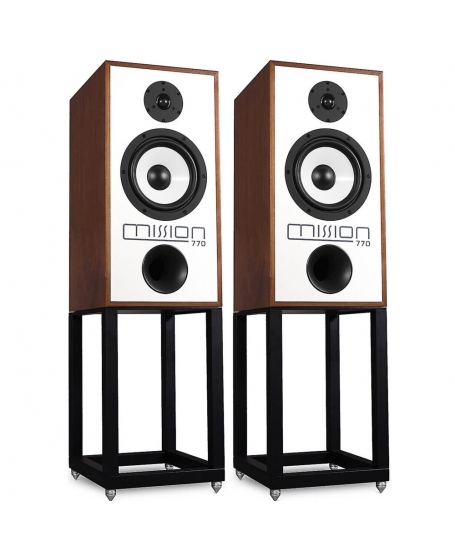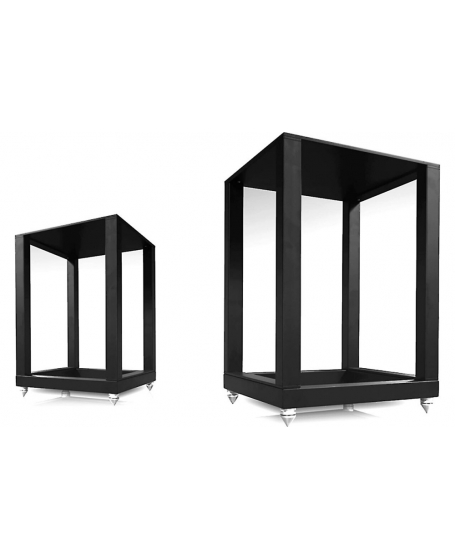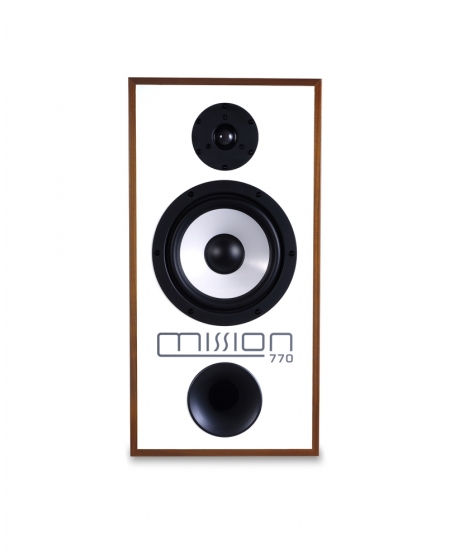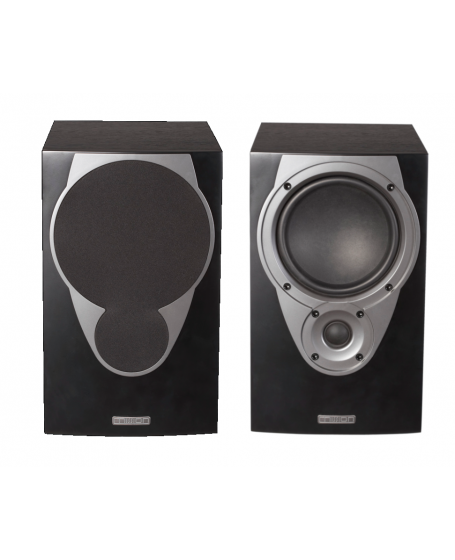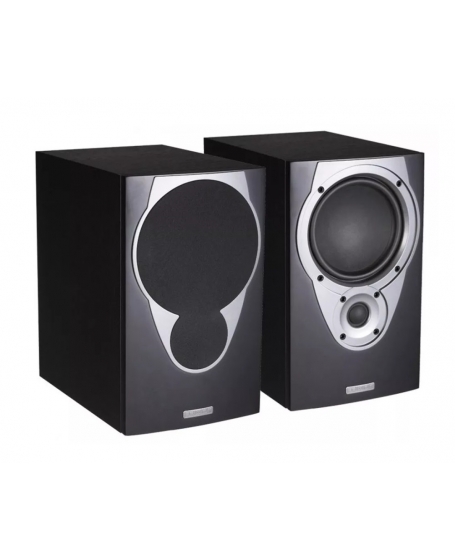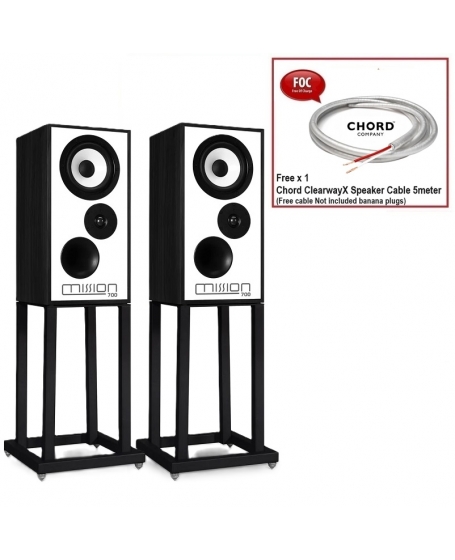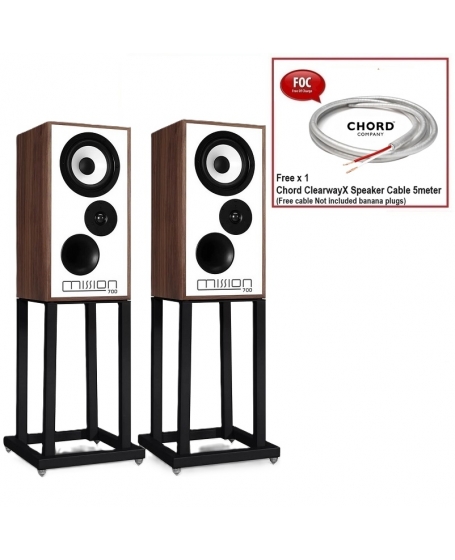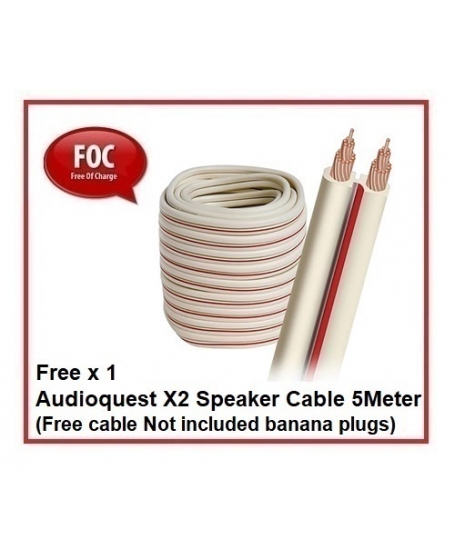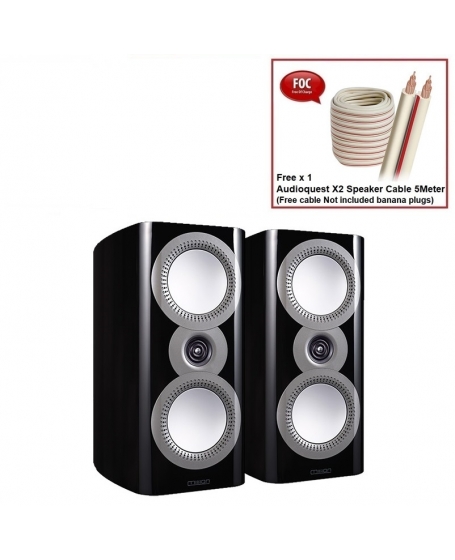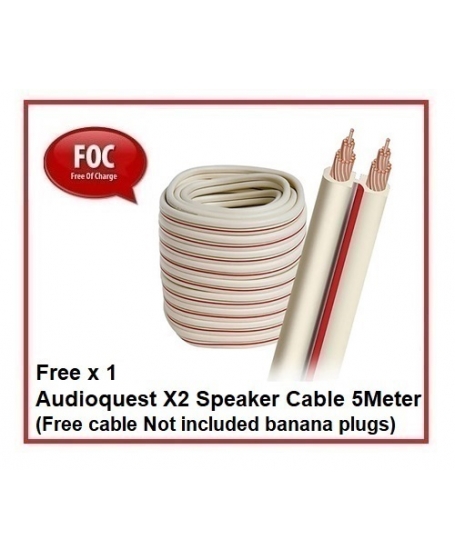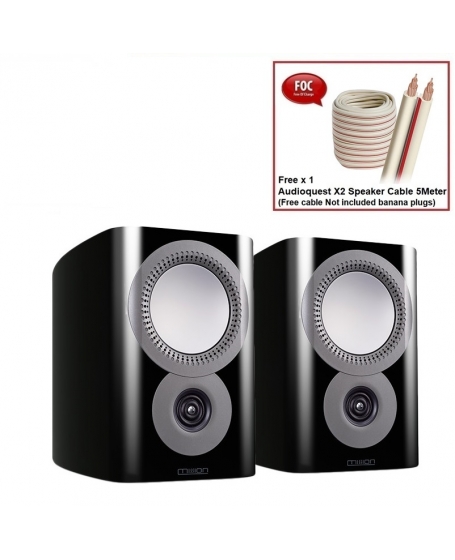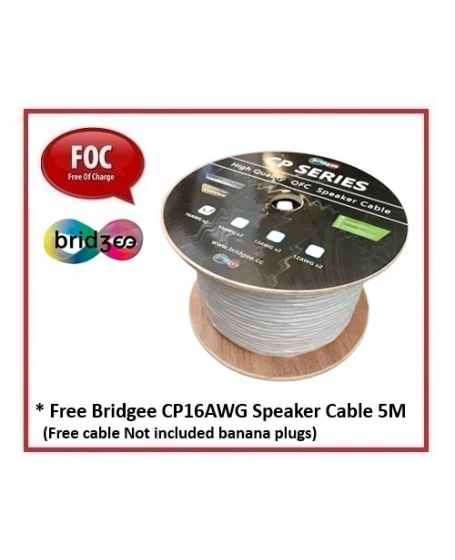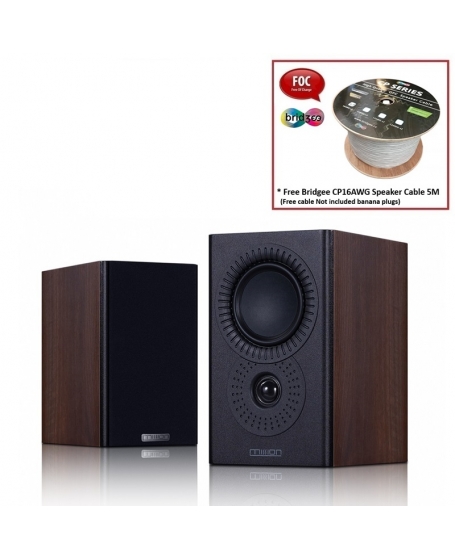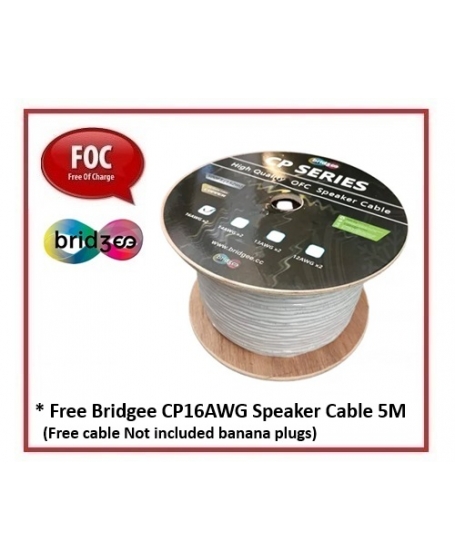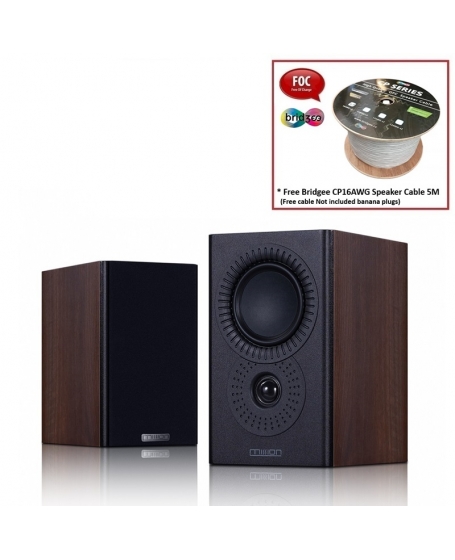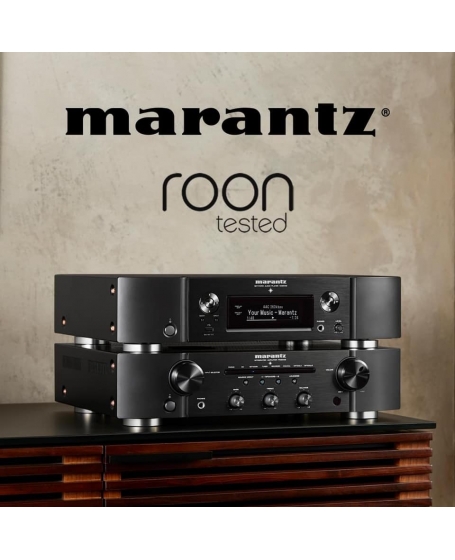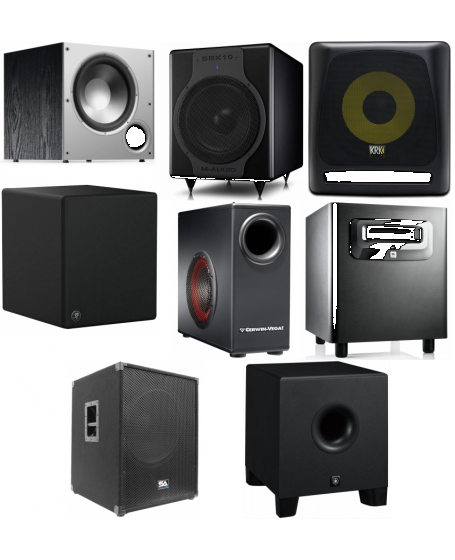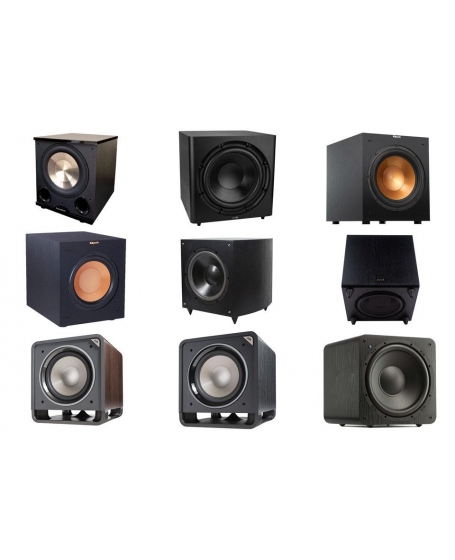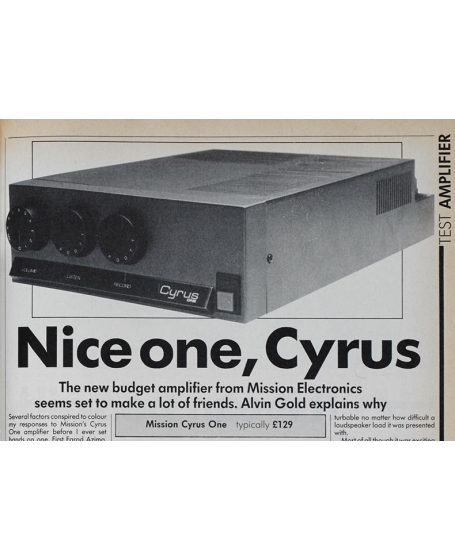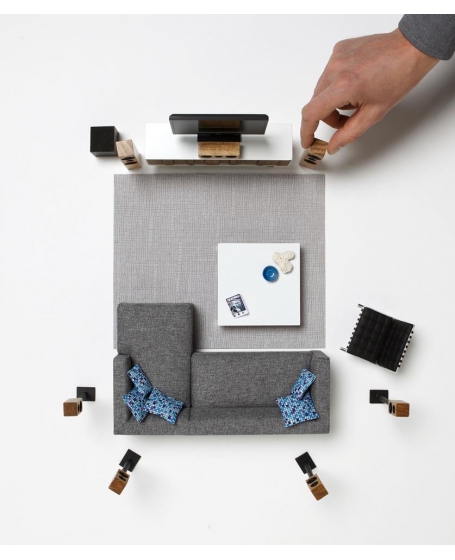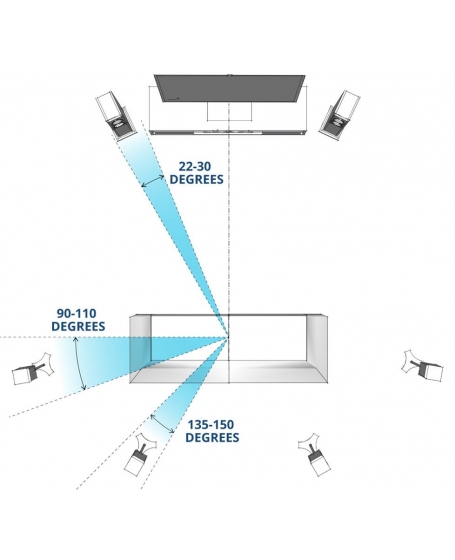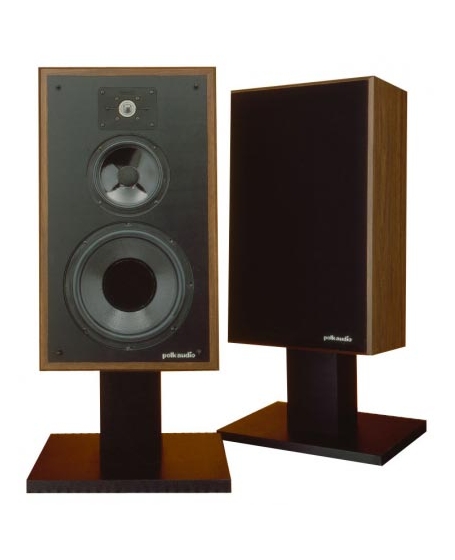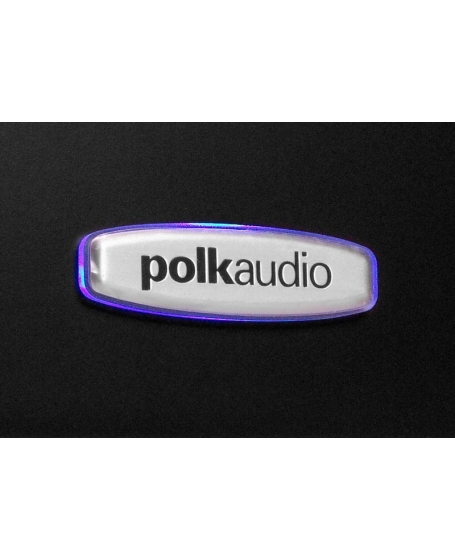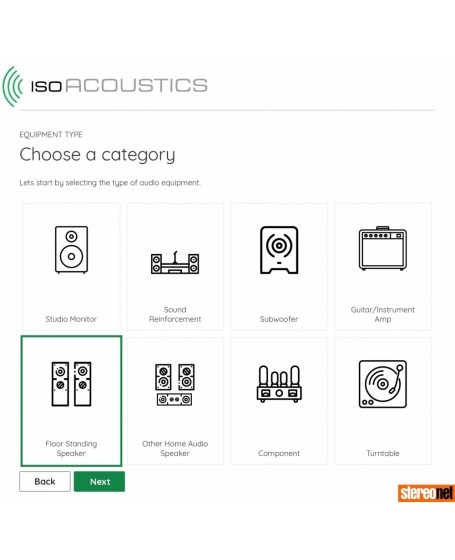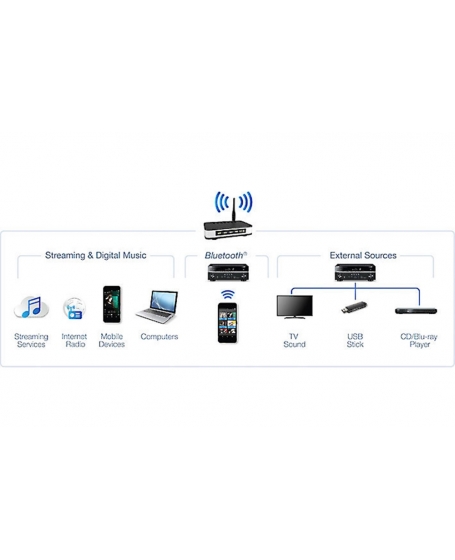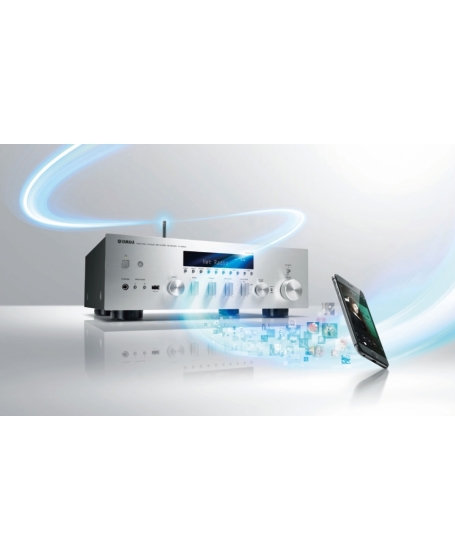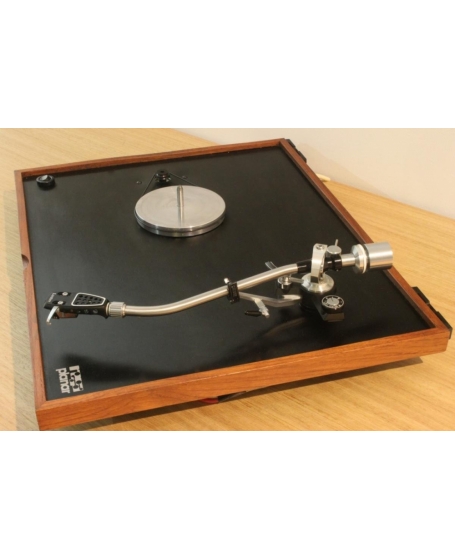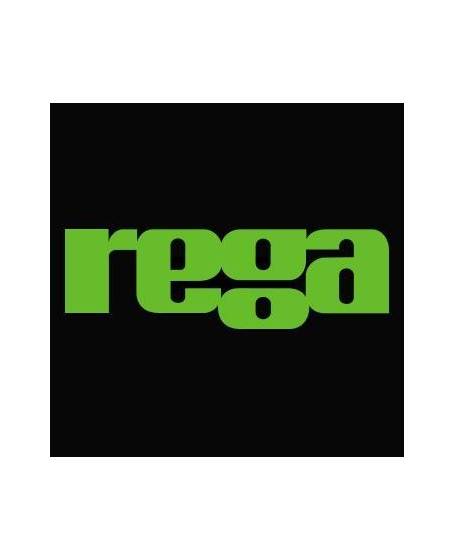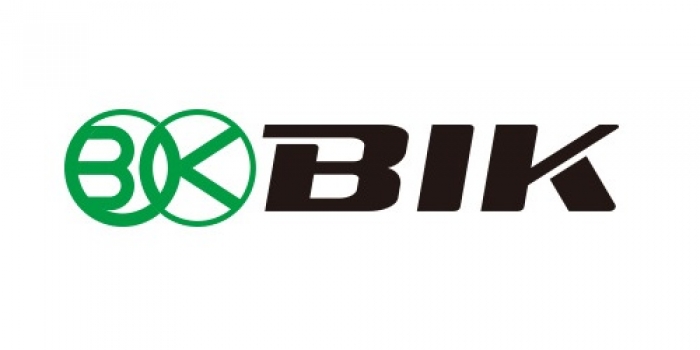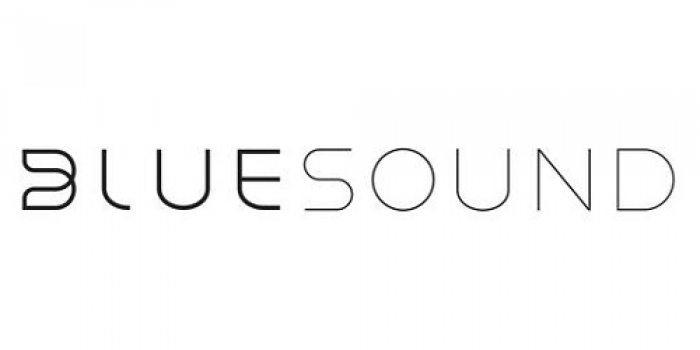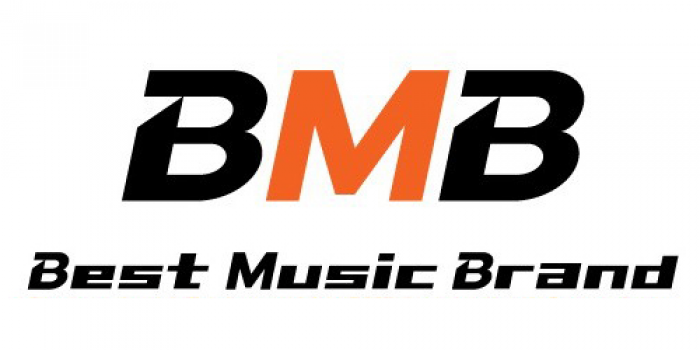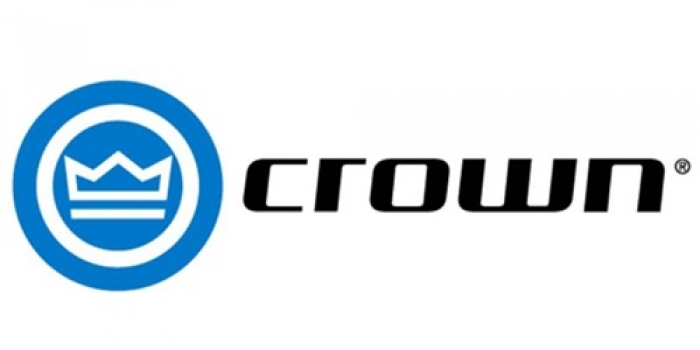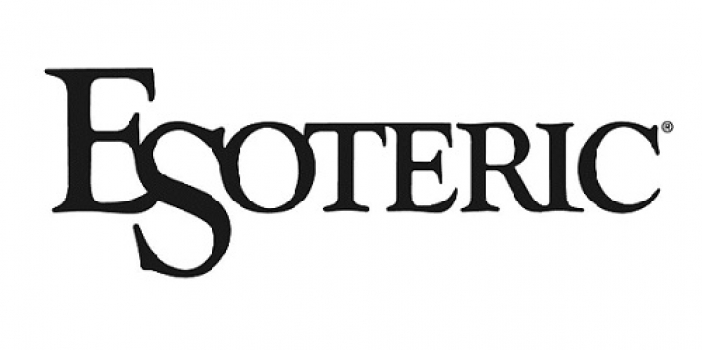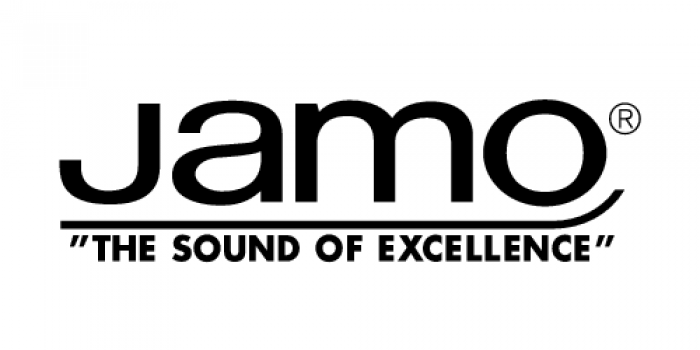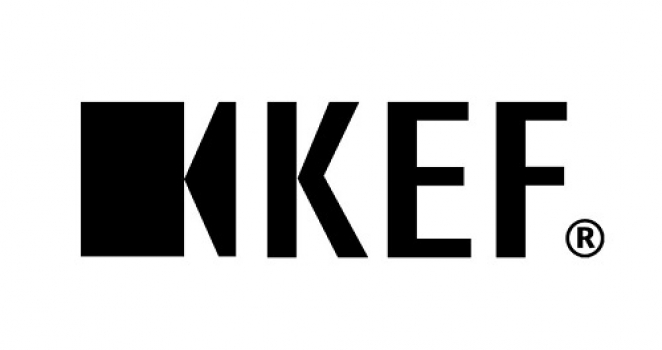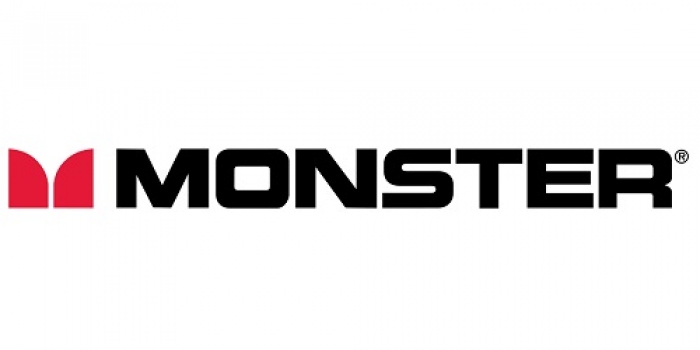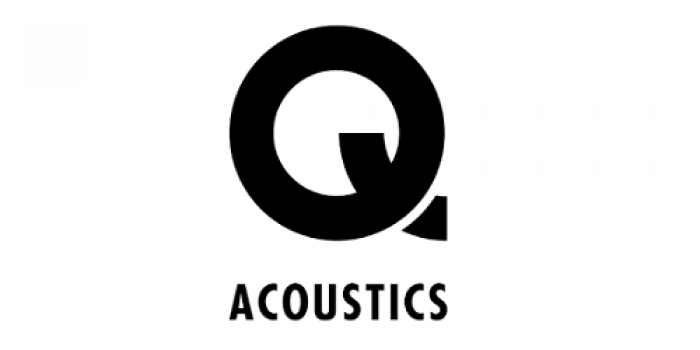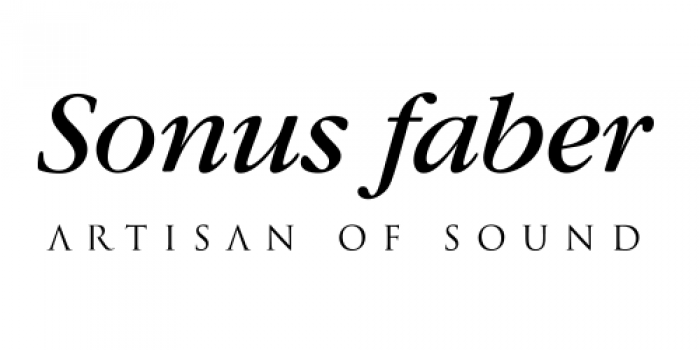Mission 770 Bookshelf Speaker With Speaker Stand Made In England
SKU: Mission 770Sensitivity: 88 dB
Peak SPL: 117 dB
Power handling: 25-200 watts
Nominal impedance: 8 ohms
* Free Chord ClearwayX Speaker Cable 6meter (Free cable Not included banana plugs)
* Free gift will be packed nicely in the product’s box for shipping option
* 如果需要邮寄,我们将会把赠品放进产品包装内。
Mission 770

The Mission 770 represents one of the most iconic models in the long history of Mission loudspeakers. A model that embodied the Mission pioneering research through the late 70s and 80s, with a bloodline dating back to 1977. The original Mission 770 debuted in 1978. It quickly became Mission’s best-selling speaker, and gravitated naturally into MK2 and MK3 alterations with improvements to sensitivity and power handling. After that, the design eventually migrated to Freedom and other variations, but none of them made the sales impact or notoriety that the original 770 received.
The project’s design and engineering team was led by Peter Comeau, Mission’s current Director of Acoustic Design. Peter was a young reviewer for Hi-Fi Answers when the original 770 launched and well remembers its impact (he subsequently co-founded loudspeaker maker Heybrook in 1979). For Peter, the new Mission 770 is a labour of love; just as it was for Farad Azima all those years ago.

The new 770 heralds the return of UK-based manufacturing for the Mission brand, where a 25,000 square foot production facility has been purpose-built in Huntingdon, Cambridgeshire – the home of British Hi-Fi.
The Mission 770 has always been manufactured according to the Mission principles of quality and value for money. New Mission 770 further exemplifies these two edicts; balancing fine craftsmanship, natural sound quality, and affordability inside a beautifully proportioned loudspeaker that has been bought in its millions right across the globe through its various incarnations.
The original 770 was well known for its warm, rich and natural sounding character and the new Mission 770 retains that standing but imbues it with an open, detailed performance that will entice you to explore your whole music collection, once more.
Emphasis on Design
The emphasis for the design of the new Mission 770 is, indeed, that combination of polypropylene cone and resonance controlled cabinet. Accordingly, Mission has developed a new polypropylene driver, mimicking the extended response and low colouration of the original, while upgrading the motor system to take account of modern power handling and dynamic requirements. Naturally, like the original, the driver is built onto an 8-inch die-cast chassis with larger rear ‘windows’ to reduce early reflections back through the cone. Special care has been taken to marry a low-density nitrile surround to the cone to match its impedance and reduce reflections from the cone edge.
The original 770 was well known for its warm, rich and natural sounding character and the new Mission 770 retains that standing but imbues it with an open, detailed performance that will entice you to explore your whole music collection, once more.
Drivers Anew
A new 20cm polypropylene mid/bass driver was developed for the re-engineered 770, mimicking the extended response and low coloration of the original, while upgrading the motor system to take account of modern power handling and dynamic requirements.
Like the original, the driver is built onto a die-cast chassis with large rear ‘windows’ to reduce early reflections back through the cone. Special care has been taken to marry a low-density nitrile surround to the cone, to match its impedance and reduce reflections from the cone edge.
The new polypropylene cone is loaded with minerals to make it stiffer than the original, yielding fast, tight bass that enables the listener to hear exactly how bass instruments are being played. This is balanced by tuning the cabinet and reflex port to a very low frequency, avoiding the ‘one note bass’ that is typical of a lot of bass reflex systems. In addition, the port is strongly flared at both inlet and outlet to smooth airflow and eradicate distortion. Bass extends powerfully and cleanly to below 30Hz in room, which is remarkable for this size of speaker.
The Woven textile soft dome treble unit – true to form, with a high flux ferrite magnet, is engineered for smooth, detailed HF extension. This new treble unit uses a lightweight, damped microfibre dome with an ultra-smooth response, backed by a damped rear chamber that pushes the fundamental resonance well below the crossover region. The quality of this 28mm dome marries perfectly with the mid/bass driver to ensure evenness of character throughout the range of the whole speaker.

Endless Development
The highly researched crossover – 1000s of hours of listening tests perfect the coherent, seamless musical output that is both thrilling and natural in its rendition of any source material.
IAG’s Director of Acoustic Design, Peter Comeau, has worked tirelessly to ensure a seamless integration between the drive units, so the speaker behaves as one music-making system.
Today’s advanced software crossover mapping and measuring techniques allow Mission to perfect the balance between bass and midrange and adjust the crossover to the treble unit by mapping the acoustic crossover slopes with extreme accuracy. Even so, the choice of EQ and crossover for the new 770 involved hundreds of hours of listening sessions using a wide variety of music, and over 170 circuit iterations were tried before the final crossover was settled upon.
The circuit was then mapped out onto separate bass and treble PCBs using very short signa paths and accommodating high-quality components such as super-transparent polypropylene capacitors and air core inductors, maintaining the simplicity and elegance of the original whilst improving critical elements. The resulting transparency to musical detail ensures the thrilling emotion of music is fully conveyed, whilst maintaining a seamless transition between the mid/bass and treble units.

The Cabinet
The drivers and crossover are housed in a real-wood veneered cabinet with a white laminated front baffle echoing the style that made the Mission 770 a stand-out hi-fi product in the 1970s and ’80s. Beneath the rich, rosy-tinged walnut or black veneers lies a further technological advancement. While the original 770 reduced midrange coloration using the BBC-influenced technique of a thin-wall cabinet damped by mass loading with bitumen pads, the new 770 features a twin-wall sandwich of high-density MDF and particle board bonded by a layer of an All-new treble unit with 28mm microfibre dome delivers smooth and extended high-frequency performance high-damping adhesive. This results in a cabinet with panel resonance well below audibility, allowing the drive units to do their job unsullied by cabinet coloration at all frequencies.
Internal bracing adds strength to the front baffle and braces the drive unit to the cabinet, creating a mechanical support that aids the dynamic performance of the bass unit and reveals the microdynamics of the musical performance. This is complemented by a layer of acoustic foam and damping fibre, strategically placed to absorb reflections inside the cabinet without overdamping the bass quality.

The new Mission 770 is not only designed and engineered in the UK; it is made here too. Mission’s parent company, IAG, has expanded its facilities in Huntingdon, Cambridgeshire – the traditional home of Mission – to incorporate key manufacturing, assembly and finishing processes for specially selected products, in addition to the R&D function already located here. A 9,000ft2 production facility has been added to the existing building in Huntingdon, including a new anechoic chamber, making a total of 25,000ft2 of office, lab and manufacturing space.

A Stand Up Design
The Mission 770 stand is custom designed in conjunction with Mission’s Director of Acoustic Design, Peter Comeau. Every aspect is considered to create the perfect presentation of the 770 speaker. Hand made in the England, with robust British steel, the 770 stand reinforces the no-compromise approach in the ‘Made in UK’ theme for the return of the Mission 770.
General Description 2-way vented-box / standmount
Enclosure Type Bass reflex
Transducer Complement 2-way
Bass Driver 8" (200mm) mineral loaded polypropylene cone
Treble Driver 1.25" (28mm) soft dome
AV Shield No
Sensitivity (2.83V @1m) 88dB
Recommended Amplifier Power 25-200W
Peak SPL 117dB
Nominal Impedance 8
Minimum Impedance 6
Frequency Response (+/-3dB) 42Hz ~ 20kHz
Bass Extension (-6dB) 30Hz
Crossover Frequency 2.9kHz
Cabinet Volume (in litres) 38.5L
Dimensions (mm)
Height (on plinth) 590mm
Width 300mm
Depth (with terminals) (300+22)mm
Carton Size 440 x 430 x 725mm
Net Weight 19.2kg/pcs
Mission 770 review
What Hi-Fi? Awards 2022 winner. Taking inspiration from the old ways can give great results


We love classic old hi-fi. Give us a chance to hear an original pair of Quad ESL-57 electrostatic speakers, Krell’s first power amplifier, the KSA 100, or an early Linn LP12 and we simply wouldn’t be able to resist. A huge part of the appeal of these products is all about nostalgia, of course. Compared to the very best we can make today, each of this legendary trio would struggle, though it’s important to note that they would still charm due to their innate specialness.
But what if you take such a classic design as a base, and then execute it with the full might of current technology and the benefit of improved technical knowledge gained over the decades? This is something that JBL has already managed to do with the excellent L100 Classic and it’s a formula that Mission has followed with the resurrected 770 we have on test here. The company has even gone so far as to make these speakers at a new manufacturing facility in the UK to emphasise the heritage angle, rather than build in China alongside the rest of the range.
Build

The original 770 were launched back in the late 1970s. They were hugely successful and instrumental in establishing the then-fledgling speaker brand in the market. The story goes that Mission’s founder, Farad Azima, was hugely impressed by Spendor’s BC-1 monitor but wanted a more upbeat and involving sound. The 770 were the result – a large two-way standmounter with a 20cm polypropylene mid/bass unit mated to a 25mm plastic dome tweeter through a relatively simple crossover. The cabinet was made of heavily damped chipboard, echoing the BBC-inspired thin wall construction of the Spendor.
Mission has been far more faithful than JBL about sticking to the original version’s appearance, right down to the white front baffle with its distinctive and rather unsubtle branding between the mid/bass unit and port. Look at the two 770 generations side by side and the resemblance is unmistakable, but that doesn’t mean that Mission hasn’t taken every opportunity to improve things.
For starters, rather than go for the BBC-inspired route of cabinet design, Mission has chosen a more modern approach by making the speaker panels a twin-wall sandwich of high-density MDF and particleboard, bonded by a layer of what the company describes as ‘damping’ glue. The idea is that the two layers help to control each other’s resonances and together (with the glue, of course) form a rigid structure. This method of construction should avoid the excess richness and slightly loose bass that can often result when using the traditional BBC method.
While Mission has stuck with the same size of polypropylene mid/bass cone as the original, the one used in this new generation is a thoroughly modern design with an open, rigid die-cast chassis and carefully honed motor system. The polypropylene cone, coloured white just like in the original, is mineral-loaded and carefully shaped to aid rigidity. This cone is then married to a low-density nitrile surround to control any resonances. The tools available to a speaker designer to optimise performance are so much more sophisticated than they were back in the original’s heyday that it’s easy to understand how the current drive units could easily outperform their ancestors.
The same applies to the 28mm microfibre Polyester dome tweeter, which is a modern vented design that’s linked to the mid/bass via a more complex crossover than before. The crossover point is set at a fairly conventional 2.9kHz. Connection is through a single pair of chunky speaker terminals.
The performance of any standmounter is reliant on the quality of its support, so we’re pleased to report that Mission has taken things seriously and designed dedicated stands for the new 770. Even more pleasingly, these are included in the package when you buy the speakers. That’s a good thing, as these standmounters are an unusual size by current standards.
The 770 stands are a frame design made mostly of high carbon steel, with the uprights internally damped to control resonances. Once built – they come flat-packed – these supports feel solid and, as would be expected, fit the speakers perfectly. They position the tweeter at an ideal height for our listening position.
Compatibility

Any speaker at this level positively demands a top-class system, and these boxes are no different. The majority of our testing is carried out with our usual reference system of a Naim ND555/555 PS DR music streamer and Technics SL-1000R turntable, both feeding a Burmester 088/911 MkIII pre/power. We also plug in the Naim SuperNait 3 integrated to see how the Missions perform with a more price-compatible amplifier.
The Mission’s sensitivity is pretty good at 88dB/W/m, which when combined with an impedance that doesn’t dip below 6 ohms means that they should suit a wide range of amplifiers. In most circumstances, the partnering amplifier for these should be chosen on quality grounds rather than how many watts it produces.
Make no mistake, these are big standmounters by current standards. Their internal volume is 38.5 litres – around double that of most rivals. Add the fact that they sound best when given space to breathe and there’s certainly the potential for them to dominate in modestly sized rooms.
In our relatively spacious – 3m x 5m x 7m (hwl) – test room, these Missions sound best when placed around 75cm from the rear wall and well away from the sides. Angling them slightly towards the listening position helps to focus and solidify the stereo imaging, so that's something well worth doing.
Sound

As a general rule, big speakers with big drive units tend to produce big bass, and that holds true here. Mission claims a low-end response that extends to 30Hz in a room, which is well beyond what most rivals can manage.
But that’s not the aspect of the 770’s low-end performance that impresses us the most. We can’t recall a similarly priced standmounter that has as much finesse when it comes to delivering bass. As we listen to Massive Attack’s Angel, it’s the articulate way these speakers render the bass notes that stick in the mind. They sound taut and agile, but also delicate in the way they paint bass textures and resolve low-level information. It’s a balance that is a little leaner and drier in the bass than we expected, though not so much that it will prove an issue with system matching. Don’t worry, there’s plenty in the way of punch and power when required.
Move up the frequency range and we’re greeted by a clear, precise and expressive midrange. Mission’s best speakers have always had a brightly lit, slight forward balance in the midrange and these new speakers echo that. It gives the 770 a lively and engaging presentation that, in this case, is judged well enough never to sound thin or overly aggressive. That new soft dome tweeter isn’t the most detailed we’ve heard at this level but has enough in terms of refinement and bite to blend in nicely.

We move to Stravinsky’s The Rite Of Spring and the Missions sound right at home, delivering the music with impressive authority and scale. Of course, the extended low-end helps, but it’s also the 770’s wide-ranging dynamics and generally articulate nature that brings the music to life. It’s a musically cohesive presentation that’s controlled and nicely organised.
Rhythmically things are sure-footed, with the speakers able to communicate the often frantic drive of the symphony well. It’s a presentation that preserves the high octane energy of the music yet still manages to sound calm and composed. That holds true even at higher volumes where the 770 keep a firm grip on dynamic integrity and refinement.
We’re happy with the stereo imaging too. Once the speakers are placed with care we get a solid and spacious stereo image that’s pleasingly uncluttered. It’s layered and nicely focussed, though we notice that the 770 don’t quite disappear into the soundstage in the way the best of their smaller rivals manage. Pleasingly, the imaging remains stable even as the music becomes more demanding.
Verdict

Our conclusion? We think these new Mission 770 are right up there with the very best at this price. While the link to the past will be the main attraction for some, for us that’s put in the shade by the speakers' excellent all-round performance. The 770 have a range of sonic talents that sets them apart from most rivals and earns them a warm recommendation.
SCORES
- Sound 5
- Build 5
- Compatibility 5


